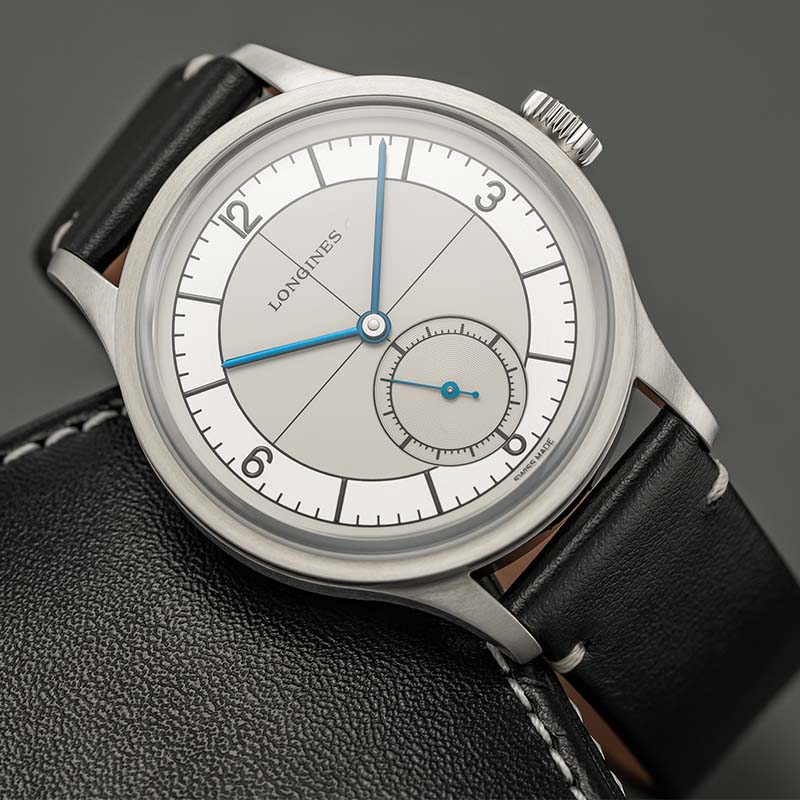The Omega symbol that accompanies the brand’s classical logotype is one of the most recognizable emblems in the watch world, up there with Rolex’s hallmark coronet and Patek Philippe’s venerable Calatrava cross. But what exactly does Omega’s iconic hieroglyph actually symbolize, and what is its meaning in the context of the Swiss manufacture’s watchmaking history?

Put simply, the symbol that has long been identified with the Omega brand is a stylized version of the 24th and final letter in the Greek alphabet, called Omega. (If you went to a college that had fraternities and sororities, this probably isn’t news to you.) Much like its counterpart at the beginning of the Greek alphabet, Alpha, the symbolism of the letter Omega has been interpreted various ways throughout history. As “the first” letter, Alpha has become associated with leadership and dominance, i.e., an “Alpha Male” or an “Alpha Dog.” Omega, as the final letter, has been known to connote greatness in its own way, representing the culmination or ultimate expression of a great effort or undertaking. The Biblical connotation of “I am the Alpha and the Omega” — i.e., the beginning and the end, as spoken by Jesus in the Book of Revelation (below) — has also lent weight to the concept of Omega as representing the end of an epoch or, in more ominous but perhaps more horologically relevant terms, the End of Time.

So what does all this have to do with a watch brand? Let’s start at the beginning (or the “Alpha of Omega,” if you will). The company now known as Omega was not originally registered under that name. At its founding, by 23-year-old watchmaker Louis Brandt in the Swiss village of La Chaux-de-Fonds in 1848, the company was based out of a workshop in Brandt’s family’s villa and known as La Generale Watch Company. Originally a producer of key-wound pocket watches from parts supplied by local artisans, the company was renamed Louis Brandt et Fils in 1880 after Brandt’s sons Louis-Paul and César took over after the founder’s death.
 Under the leadership of the Brandts (family photo above), the growing company moved from La Chaux-de-Fonds to the more bustling town of Bienne (as it is known by French-speaking Swiss; German speakers call it “Biel”) in the Swiss Canton of Bern, where it is based to this day. During this period, Louis-Paul and César pioneered a series of industrial watchmaking techniques and also began serial production of in-house movements, with the first one, called the Labrador, launching in 1885 in a now-legendary series of pocket watches.
Under the leadership of the Brandts (family photo above), the growing company moved from La Chaux-de-Fonds to the more bustling town of Bienne (as it is known by French-speaking Swiss; German speakers call it “Biel”) in the Swiss Canton of Bern, where it is based to this day. During this period, Louis-Paul and César pioneered a series of industrial watchmaking techniques and also began serial production of in-house movements, with the first one, called the Labrador, launching in 1885 in a now-legendary series of pocket watches.

Nearly a decade later, in 1894, came the company’s chef d’oeuvre, the 19-ligne Omega Caliber, which was notable at the time for its enviable accuracy, its use of a crown rather than a key to wind the mainspring, and its construction using interchangeable components, which enabled any watchmaker in the world to service it — an industrial practice that would become standard in the industry in years to come. Naming the movement “Omega” was no fluke: it was regarded at the time as the pinnacle of the company’s horological expertise, and positioned as the ultimate watch movement the industry had yet seen — the endpoint of a years-long quest for excellence in timekeeping. Brandt watches outfitted with the caliber eventually were all marketed under the sub-brand “Omega,” and the entire company changed its name to Omega when it was reorganized in 1903 and headed by Paul-Émile Brandt, eldest of the surviving sons of Louis-Paul and César, who both died in that year. By that point, the Omega watch company was a world leader in watchmaking, employing more than 800 and making more than 200,000 watches annually, which meant that its chosen emblem was destined to be recognized across the globe.

It was the imagery of a globe, in fact, that helped usher in the Omega logo as we know it today. The first usage of the familiar Omega symbol by the Swiss watchmaker actually predated the renaming of the company. In advertisements appearing in 1895 touting its new in-house caliber, we find an illustration of Chronos, the winged Greek God of Time, carrying a lance and a pocket watch, poised astride a globe emblazoned with the ancient Greek letter at its equator.

Like many classic logos, Omega’s has changed very little over the 175 years that the company has been making watches. The original logo, which was in usage until 1974 on watch dials, packaging, and marketing materials, incorporated a thin, curvy Omega letter centered directly above the word “OMEGA,” in the same color as the symbol. The letters of the logo were in a sans-serif font except for the “G,” which notably sported a sharp serif on its curved upper part to balance out the points on the Omega symbol above.

Since 1975, Omega has been using a sharper, more streamlined version of the original logo, using Futura Medium, a solidly sans-serif typeface, for the word “OMEGA” and a revised version of the Omega symbol in which the ends of the “horseshoe” are sharply angled rather than curved. The default color for both the typography and the emblem are red, distinguishing it from its predecessor, which was usually executed in black. The overall design is subtly harmonious: the strong circular forms of the “O” and “G” contrast with the sharp edges of the rest of the letters and find an echo in the wide round curve of the Omega symbol above.

Of course, the Greek letter Omega is found in many other instances outside of the watch industry. In physics, an Omega symbol represents the unit of electrical resistance known as an ohm, named for German physicist George Ohm. In chemistry it denotes Oxygen-18, a naturally occurring, stable isotope of oxygen used in medical and pharmaceutical applications. High-level mathematics has a law known as the Omega Constant, with the symbol standing in for a specific numerical value (0.567143290409783872999968662210, to be precise) used in quadratic equations. Even Star Trek features the “Omega Particle,” a dangerous and powerful molecule that threatens the fictional United Federation of Planets. It is the Greek letter’s association with one of the world’s most prestigious luxury watchmakers, however, that has made it so recognizable to so many around the world.






















































0 Comments